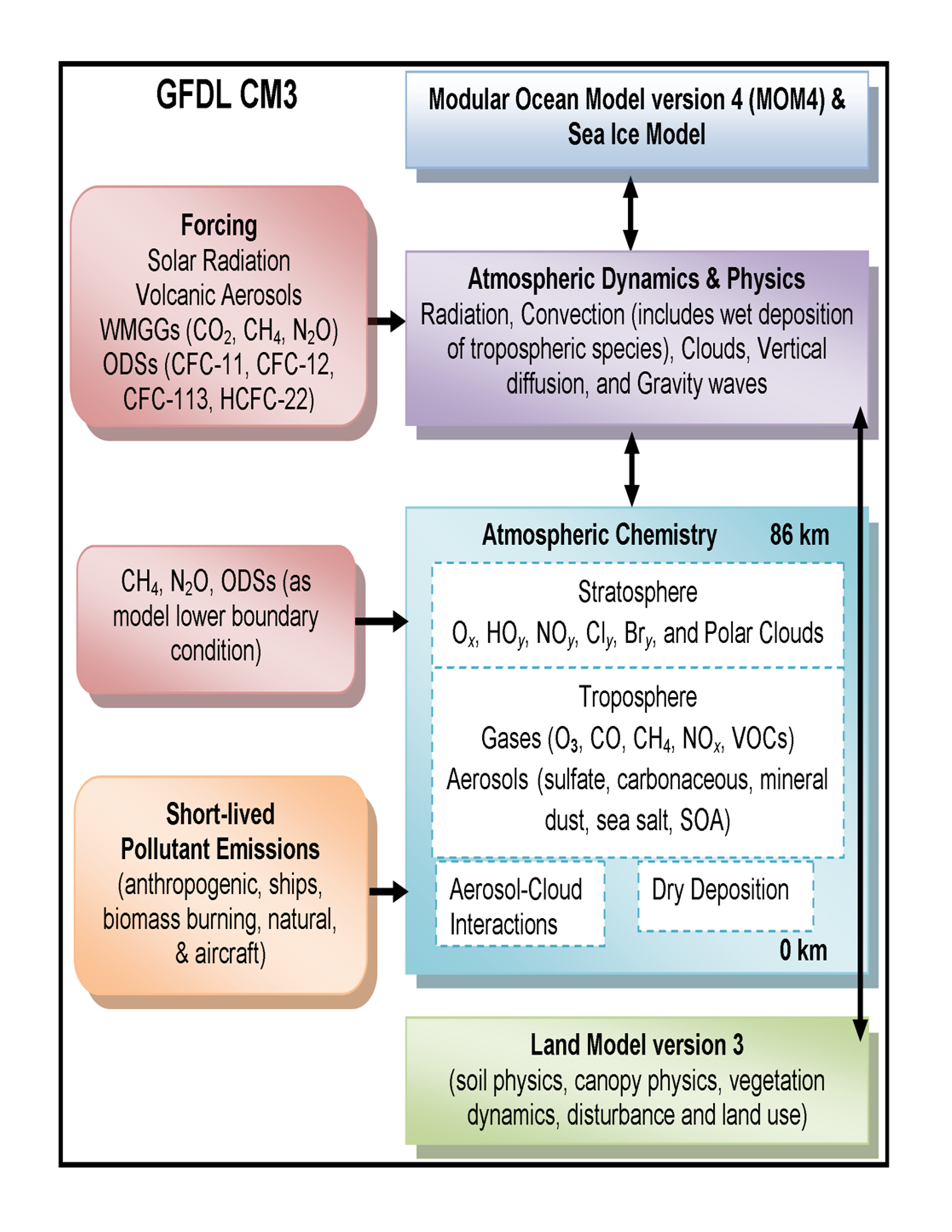Tropospheric Chemistry and Aerosols

Contacts, for more information:
Tropospheric chemistry plays a critical role in perturbing the climate by controlling the abundance and distribution of a number of short-lived air pollutants, including methane, tropospheric ozone, and aerosols. The spatial and temporal distribution of these air pollutants, relevant for surface air quality, depends on direct emissions from natural sources and anthropogenic activities, chemical processes, atmospheric long-range transport, and climate variables such as temperature and humidity.
The presence of short-lived air pollutants in the troposphere, in turn, strongly perturbs climate by affecting the radiative balance of the Earth. A better understanding of the interactions between tropospheric chemical constituents and climate is, therefore, essential to fulfill NOAA’s mission of understanding and predicting changes in climate.
GFDL Research
At GFDL, scientists develop and apply global chemistry-climate models, such as CM3, to understand interactions between short-lived pollutants, air quality, and climate. These models range from simple chemical transport models to complex global coupled general circulation model for the atmosphere, oceans, land, and sea ice with explicit representations of tropospheric and stratospheric chemical processes, and aerosol-cloud interactions. The models are tested against a suite of atmospheric observations (e.g., aircraft campaign measurements, surface observation networks, satellite retrievals) to improve them and build confidence in their utility for addressing air quality and climate issues on time-scales from months to multiple decades on local to global spatial scales.
Research is focused on the synergistic use of observational data sets and models to gain a better understanding of the role of tropospheric chemistry and transport of air pollutants in the climate system, as well as skillful prediction of the impact of future changes in air pollution on climate and the impact of climate variability and change on air quality and long-range transport of pollutants. GFDL scientists collaborate with scientists at other laboratories and universities to obtain expertise and observational data sets necessary for developing robust models in support of NOAA’s mission. GFDL also participates in international community efforts (e.q. ACCMIP, AEROCOM, CCMI) that apply model simulations to advance our understanding of the role of tropospheric ozone and aerosols in the climate system.

Related Links
Research Highlights




